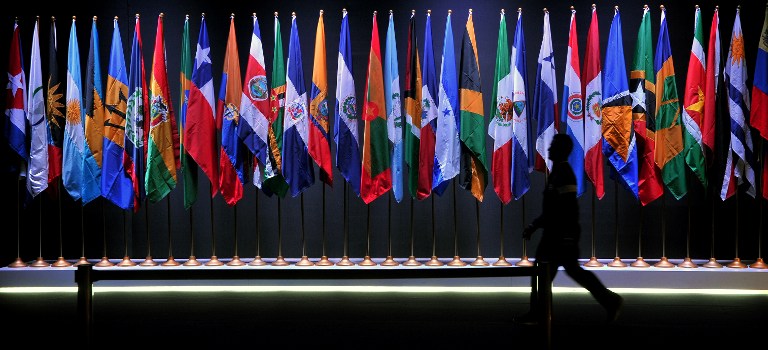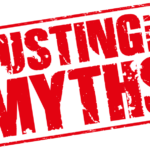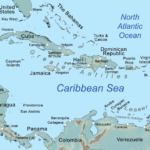
Location, talent of national soccer teams, and culture are just a few things of many that Hispanic and/or Latin countries differ in. One that may be surprising is the language. “What?” is probably the question you’re asking right now, so let me explain. There are countries whose national language is Spanish and are classified as Hispanic and Latin countries, but there are also countries who speak languages other than Spanish and are still classified as Latin countries. While people from Spain do speak Spanish they ARE NOT a Latin country.
Short Lesson: Hispanic is in reference to language while Latino/a is in reference to geographical location. Hispanic is for people who are from a country whose primary language is Spanish. (Some don’t like to identify as Hispanic and that’s okay. Just ask before you call them that.)
Latino/a means anybody who is from a country in Latin America. (Which is mostly every country below the United States of America.) This being explained, the terms Hispanic and Latino/a are used in the US to determine groups.

If you go to a Latin country, I doubt they’ll say “I identify as Latina/o” and if they do, videotape it because I won’t believe you. That being said, even in the United States there are people who don’t want to be labeled as Hispanic or Latina/o, but by their nationality. It’s always important to make sure you know before you begin labeling people.
For example, I identify as Mexican-American and since Mexico’s primary language is Spanish, then I can say I’m Hispanic. Since Mexico is below the United States of America, I can also call myself Latina. Therefore, I am Hispanic and Latina, but I only say this when someone asks me what I identify as when I’m in the Untied States. I don’t go to Mexico and tell people I’m Hispanic/Latina. (They’d probably stare at me like I was crazy and run away.)
Let’s say that Maria is from Spain. She speaks Spanish and identifies as a Spaniard. Maria can identify as Hispanic due to Spain being a Spanish speaking country, but because Spain is in Europe and not a part of Latin America she cannot identify as Latina. (If you are still unclear about the difference between Hispanic and Latino/a click here.)

While a large number of countries in Latin America speak Spanish, the reason that I say the language is different is because of the way that it is spoken. In Latin America, just because Spanish is spoken by a large number of countries it DOES NOT mean that every person in different countries are the same nationality. Labeling everyone who speaks Spanish as Mexican is absurd for many reasons but I’ll stick with the language thing for now. (Check out this video that talks about why not all Latinos are Mexicans.)
As examples of dialects I shall compare male soccer players. There’s no special reason that I’m using them as examples other than the fact of their nationality and that a few of them move around from place to place but still retain their native dialect. Well that, and the fact that I love soccer.

Before we get in to it, I need to clarify one thing. These dialects aren’t the only way that the people of these certain countries speak. There are countless others but if I was to talk about every single Spanish dialect in every single Hispanic and/or Latin country I don’t think I would do anything else for a solid month at the very least. If you don’t know Spanish thats quite alright. Just listen to the way that the words are pronounced. You should be able to hear the differences. (I hope. Either way here’s a video of soccer players doing cool stuff.)
Okay. Let’s get started.
First up, a Mexican Soccer Player. His name is Javier “Chichartio” Hernandez. (That’s not his middle name, that’s his nickname.) He plays for the German club Bayer Leverkusen and for the Mexico National Football Team. He currently resides in Germany, but before that he lived in Spain playing for Real Madrid, and before that he lived in England where he played with Manchester United. He started his career in Mexico before heading off to Europe. The reason that this is important is because while he has lived in different places and speaks English, he is Mexican and regardless of where he has lived you can still hear the dialect of Spanish that many people in the United States are used to hearing. Such as the speed of which it is talked, and the vocab and pronunciation that you may learn in Spanish class. The actual interview isn’t important. Oh, and he’s the guy in the jersey.
https://www.youtube.com/watch?v=6ygO_Qm9VAA
Next up, is James Rodriguez. He is a Colombian soccer player who currently plays in Spain for the team Real Madrid and is a part of the Colombian National Football Team. Before arriving in Spain he played for teams in Argentina, Portugal, and France. The speed at which he talks Spanish makes it clearer to understand. His vocab varies than that of Javier’s which helps demonstrate how Spanish varies from country to country. Again, the interview itself isn’t important unless you think he’s cute. (A lot of people do. I won’t judge.)
Sergio Ramos is a Spanish soccer player who plays for the team Real Madrid and for the Spain National Football Team. He has played in Spain for the his whole career and the way he speaks is how people from Spain typically speak. There are parts of Spain that don’t speak Spanish, but thats a whole other thing. Once again, the interview isn’t important and Ramos is the guy in the jersey.
https://www.youtube.com/watch?v=jyUEw7uilI4
Let’s go to South American countries.
Claudio Bravo is a Chilean soccer player who plays for FC Barcelona and the Chile National Football Team. Bravo played in Chile before moving to Spain. His Spanish varies from that of Javier’s, James, and Ramos but it is nonetheless Spanish. Listen to him speaking below, and once again the actual interview isn’t important just the way he speaks.
Next up on our dialect tour is a Uruguayan player. His name is Luis Suarez and he currently plays for FC Barcelona in Spain and also plays for the Uruguay National Football Team. He has played in Uruguay, the Netherlands, and England before arriving in Spain. However, even with all these location changes, you can still hear the difference in the way he speaks Spanish.
https://www.youtube.com/watch?v=32XbkgRpTkM
Next up is Lionel Messi who plays for FC Barcelona and the Argentina National Football Team. Sidenote: He’s the best soccer player in the world. (Open for discussion, but he’s the best player in the world.) Messi is an Argentinian player who, after leaving Argentina at a young age, traveled to Spain and has played there ever since. Here you can tell that he has managed to keep his native dialect even though he’s lived in Spain for a large portion of his life.
https://www.youtube.com/watch?v=C7k0aAb-Sec
Sidenote: I should point out that I only used soccer players who have played or currently play for FC Barcelona and Real Madrid which are two teams in Spain. There are different soccer players that I could have chosen but I didn’t feel like it.
Real Madrid and FC Barcelona have the biggest rivalry in Spain. When they play each other it’s called “El Clásico” and just watch this video so you can see for yourself how intense games can get. Real Madrid is in white and Barcelona are in the blue and red stripes.

Their fans constantly argue about who is the best team but the most heated discussion comes from the question who is the best player in the world: Lionel Messi or Cristaino Ronaldo? Messi plays for Barcelona and Ronaldo plays for Madrid. The reason I’m explaining this is because it gives me a chance to tell people that FC Barcelona is the best team and Messi is the best player in the world. Of course, if you talk to a Real Madrid fan, they will say that Madrid is the best team and Ronaldo is the best player in the world but I think they’re just confused. However, they may say the same thing about me.
Soccer is a lifestyle in many Hispanic and/or Latina/o countries, so I thought I would give you a small insight into these two teams.
Moving on…
Spanish is spoken by many countries but each country has a distinct way that they speak it. The dialects that you heard are only a small portion spoken in these countries. It’s important to realize that because you can lump nationalities under the term Latino or Hispanic, it doesn’t mean that they are the same thing. Language is one of the most important aspect of culture. It is unfair to minimize that by simply saying, “They all speak Spanish so whats the difference?” There is a huge difference and hopefully this small dialect tour gave you some insight into the Spanish language.
(I also hope you decide that Barcelona is better than Real Madrid, but you know. Whatever you want. No pressure.)
This is the fifth article of the column titled “Living in White America.” Every month there will be a new article discussing how one immigrant group, Hispanics/Latinos, live in America. This column will have articles dealing with anything and everything that concerns Hispanics/Latinos, this could include political and social talks. Some articles may discuss a culture of a different Hispanic/Latino group and interviews with a variety of Hispanics /Latinos will be added as well as interviews with non-Hispanics asking for their opinion. Discrimination against Hispanics and Latinos has gone on long enough and now it’s time people get a look into a world they dislike so much.





One response to “Living in White America: Difference in Spanish Dialects”